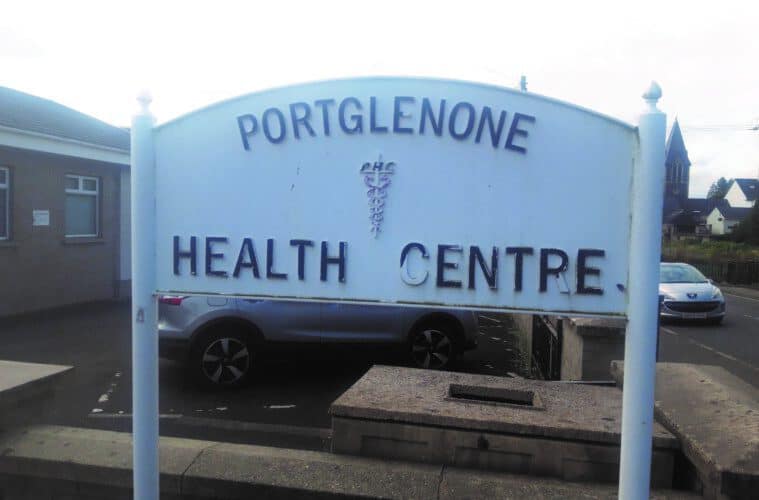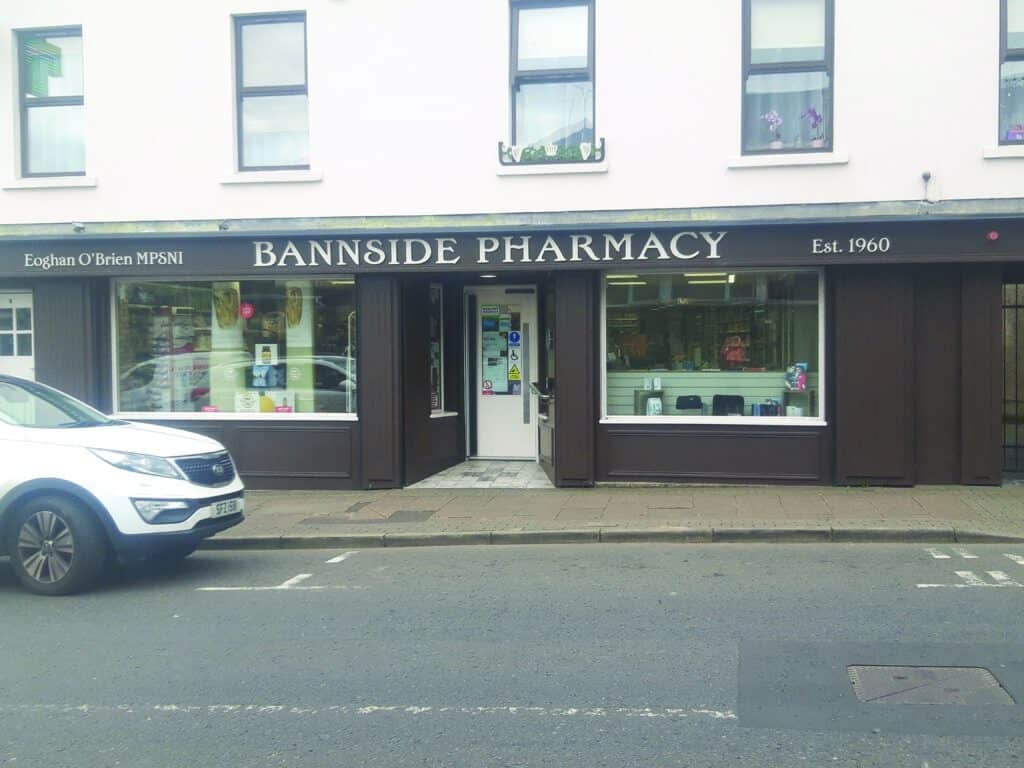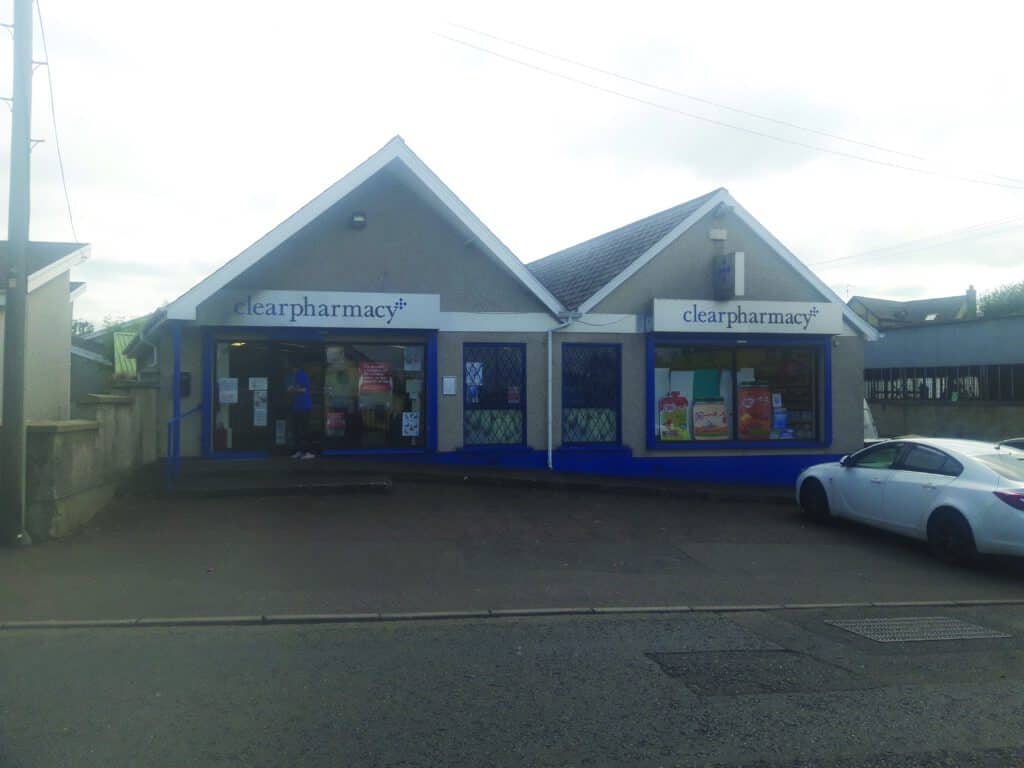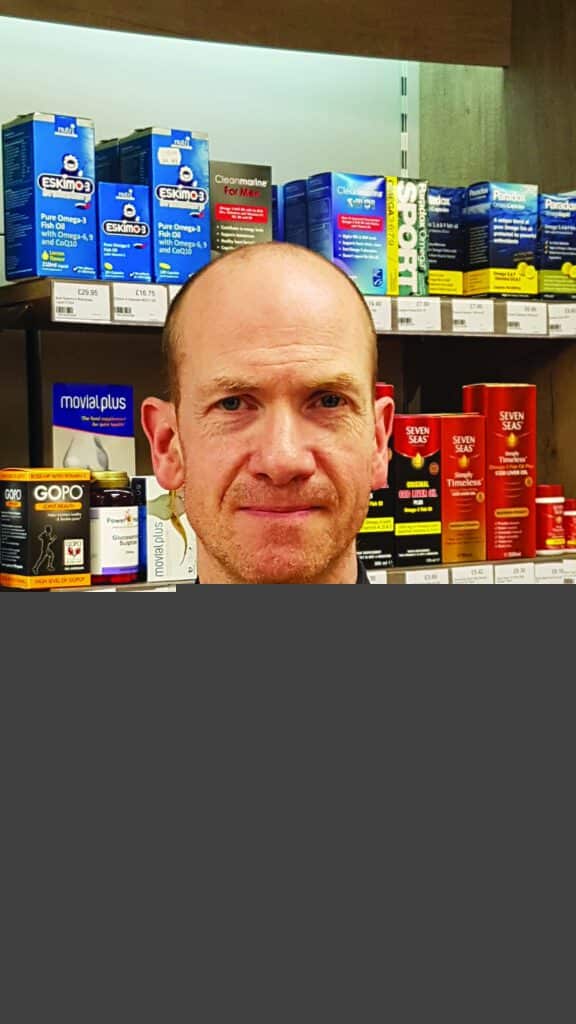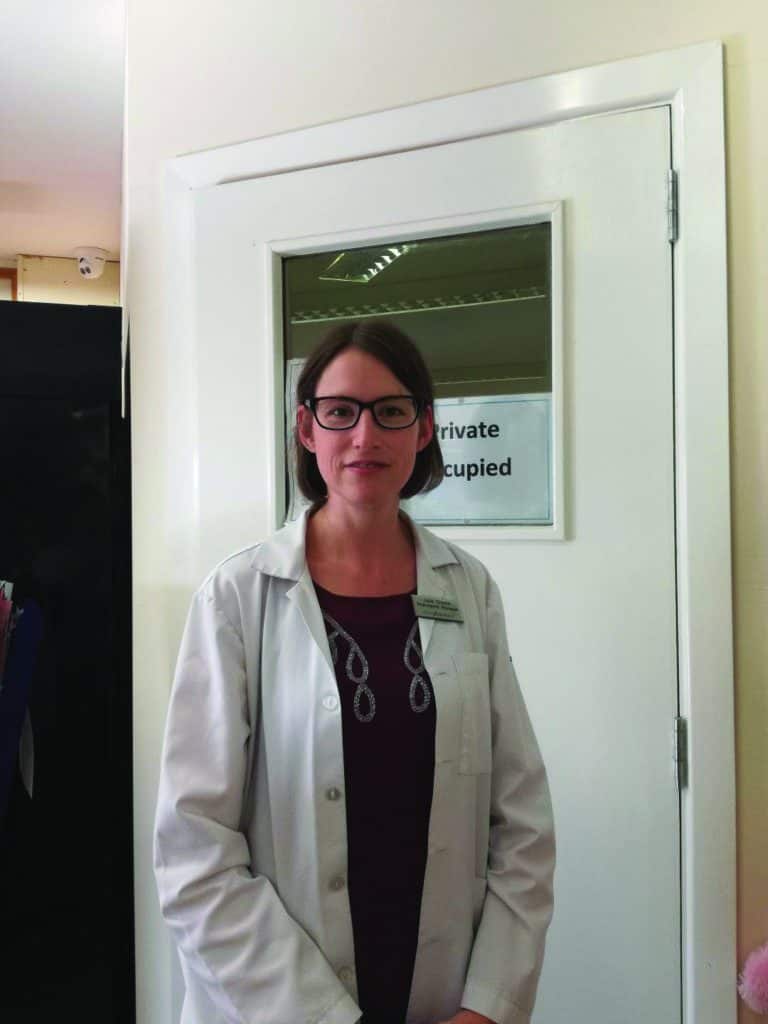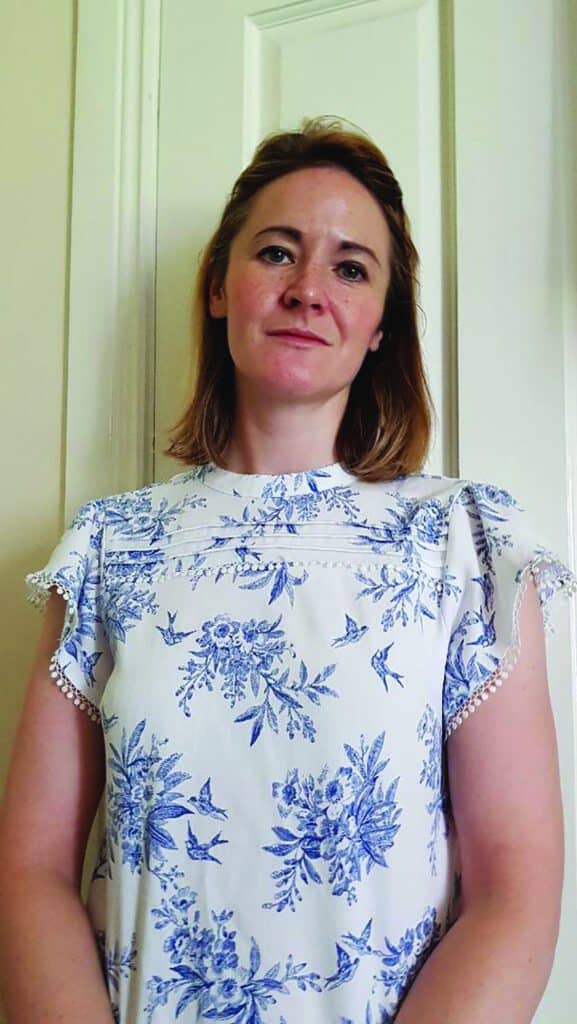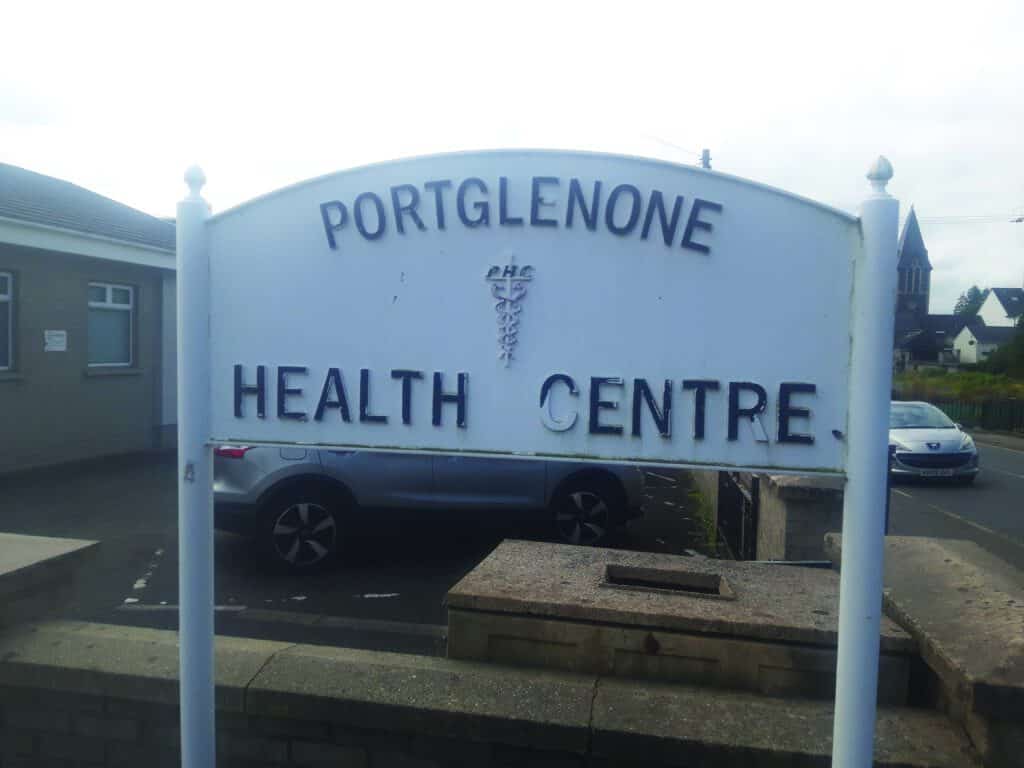Practice-based pharmacist Mary McBride tells PiF about the benefits that collaborative working with community pharmacy can bring to patients in primary care…
As a former community pharmacist, who moved into practice-based pharmacy almost three years ago, Mary McBride has worn both ‘pharmacy hats’ and is in an excellent position to assess the value that the two sectors can bring to patients by working collaboratively.
Mary became a practice-based pharmacist (PBP) in September 2016, spending almost a year in Derry/Londonderry before moving to Portglenone Health Centre in August 2017. Since then, she has worked productively – both within the surgery and with her community pharmacy colleagues.
‘My first project on arriving in Portglenone,’ Mary tells PiF, ‘was to begin carrying out safety audits. I began with patients on dual anti-platelet therapy and then started reviewing patients, who were on bisphosphonates for the treatment of osteoporosis. Research had been published, which had found that if patients were on the bisphosphonates for longer than ten years, there was an increased risk of bilateral atypical hip fracture. I spoke to the community pharmacists, who were similarly aware of the need to review these patients and, together, we were able to encourage people to attend for review and reinforce the message about compliance with this treatment.
‘This review also gave me the chance to liaise with secondary care about ongoing therapy. The patients were given a dexa scan to see if they were still at high risk of fracture and, as a result of the review, two patients were reviewed by secondary care and switched to alternative preparations.
‘The last few years have given me the opportunity to appreciate the benefits that working collaboratively with community pharmacy provide for patients, but I also felt on this occasion that the link-up between practice-based and community pharmacy was also reinforced by the involvement of secondary care. It really was a case of ‘joining the healthcare dots’.’
Mary believes that working in partnership with community pharmacy improves patient care by providing a consistent message about medication and the need for regular review.
‘It can be difficult getting people to attend review appointments at the GP practice,’ she continues, ‘Asthma is one particular area where I feel that synergy and collaboration provide the best outcomes for the patients. As someone with asthma myself, I’m well aware that, if you’re on the correct medication – and, more importantly, using it correctly – then you should never need to reach for relievers. I run half marathons and am a firm believer in exercise as an excellent therapy for asthma, but I am also aware in a professional capacity of incorrect inhaler technique etc.
‘It can often be the case that the need for review is evident from the prescription requests that patients make. As in most surgeries, the practice pharmacist plays an important role in managing prescription requests. This provides me with an opportunity to look at the medication that people are requesting and ensure that it is appropriate, for example, overuse of short acting bronchodilator inhalers. At this point I would carry out a medication review and also liaise with community pharmacy colleagues regarding an MUR for the patient so that they receive a consistent message about managing their condition and the need to attend for review.
‘The same thing goes for monitored dosage systems. If there is a change to the medication and the patient needs to have bloods taken, it can at times be difficult to get in contact with a patient. They may, for example, not answer the phone when I try and advise that blood monitoring is required. I can ask the community pharmacist to advise the patient that I have been trying to get in touch with them about their medication and to get in touch with the practice. This is especially important for patients, who maybe don’t attend the pharmacy, but who have their medicines delivered, as the message about the bloods etc can be relayed at that time. A good working relationship means that changes etc can be easily communicated between the surgery and the pharmacy and the whole process works very well.’
‘We had, for example, one female patient, who was suffering from COPD, and who was using her inhalers incorrectly. As a result, she was ordering an excessive amount of inhalers. She had recently transferred to our practice, but had not come in for a review as she had mobility issues and found it difficult to attend the practice. The community pharmacist contacted me to say that she was using too many short-acting bronchodilator inhalers. I recommended a switch to a different inhaler – a long-acting one this time due to her COPD. She was still, however, using a lot of Salbutamol, and so the community pharmacist suggested to her that she needed to attend her GP. Thanks to his encouragement, we eventually got the lady into the surgery and she was referred to the community respiratory team and is now on oxygen therapy.
‘I think one of the most important things about this type of collaboration is the fact that patients have known their community pharmacist for years, but many don’t realise that the GP surgery has a PBP. By working together, we can make sure that the patient benefits from the expertise of the pharmacists working in each setting.
‘I think the relationship between myself as a PBP and the community pharmacist is strengthened by the fact that we reinforce each other’s support for patients. Take inhaler technique, for example. If a new inhaler is required by a patient, then I go through the technique with them. I attach a note to the prescription and then the pharmacy team will go through the technique with the patient again. It’s a simple case of the more times they’re shown the technique, the more they will understand the process and the inhaler technique, which can only improve their outcome.
‘Having worked in community pharmacy and now in general practice, I can appreciate how busy we all are but there is no doubt that by working collaboratively we can streamline many of the processes, improve communication and provide a better patient-centred service.’
Eoghan O’Brien is one of the community pharmacists with whom Mary works closely. He is equally effusive about the excellent working relationship that the pharmacy team has with Mary in her role as a PBP.
‘We have had a really positive working relationship with our PBP Mary,’ Eoghan told PiF. ‘She is very pragmatic, efficient and helpful. She is an invaluable point of contact for us in the GP practice, as, thanks to her background, she fully understands the logistics of how community pharmacy operates and most importantly how we can help our patients.
‘We work with Mary in many different areas. As regards patient medication changes, for example, we often liaise both ways, which means optimal outcomes for the patients. Also, since Mary’s speciality is respiratory, we often send our action plan for respiratory patients directly to her so that we are all working collaboratively for the good of the patients.
‘I believe, however, that it is in identifying patients who are either over ordering or being overprescribed medicines, or in the cases of patients, whom we have identified as having been taking medicines longer than necessary (such as bisphosphonates or PPIs), that collaborative working has an extremely important role to play.
‘We often flag up to Mary patients, who are prescribed more than they should really need, such as opioids, benzodiazepines, pregabalin and Z-drugs. One simple illustration of this is in the case is of a patient who came in with some out-of-date hydroxocobalamin an hour before she had a three-monthly appointment for administration. The cause of this was that she was receiving a repeat prescription for ten at a time. We gave her a vial for her appointment and sent Mary a note on the patient’s behalf explaining what had happened and requesting a script for a quantity of five. We received it with the revised quantity within a couple of hours.’
Eoghan’s views are echoed by his fellow Portglenone pharmacist, Julie Steele from Clear Pharmacy, which is located at the top end of the town, just beside the Health Centre.
‘Pharmacists are always concerned when they see a patient, who is not only getting a medicine on prescription and also buying in on an over-the-counter basis,’ she said. ‘When this happens, we now flag the patient up to Mary for review – most commonly in the case of pain relief or opiates. We also flag up patients, who are receiving lots of prescriptions for medication such as benzodiazepines, for example. While this may have gone unnoticed, say in the surgery, we are able to pick up and put the patient on Mary’s radar for review. It’s particularly important in the case of patients, who are not attending the surgery for reviews, and so I’m able to ask them when they come into the pharmacy, or when we’re delivering their medication.
‘Mary is excellent for medication changes. As with Eoghan, this process works well in both directions. Recently, we had one instance, where a weekly vulnerable patient had a review with the local psychiatric hospital. The patient knew that their medication was going to be reviewed, but by the afternoon after the review, I still didn’t know what the changes were. As a community pharmacist, I’m not in a position to ring the hospital and ask, but I’m able to ask Mary to find out. In this instance, Mary had it sorted by close of play that day and I had a prescription filled for the patient. This gave us all peace of mind.
‘As with all community pharmacies, we are experiencing multiple stock shortages. In this regard, Mary is a fantastic resource for us and she is able to advise on alternatives. Recently, we were unable to source Coracten XL30 capsules from the manufacturers. I managed to source an alternative and Mary quickly organised the prescription for me. In the case of a shortage of Alverine 60mg, however, we were unable to source a direct equivalent, but Mary went straight to the GPs to ask what we should do. This also works in a reciprocal way since Mary does not have access to what’s available from the suppliers and so we can keep her advised as to what is short at any time.
‘The synergy between the GP surgery and community pharmacy is definitely enhanced by the presence of the PBP, and while it is an excellent resource for the community pharmacist, it is the patients, who benefit most from this collaborative working.’



